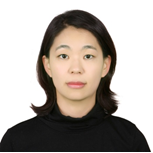Scientific Program

Julee Kim
University of Ulsan College of Medicine,Republic of Korea
Biography:
Abstract
Conventional human pluripotent stem cell (hPSC) cultures require high concentrations of expensive human fibroblast growth factor 2 (hFGF-2) for hPSC self-renewal and pluripotency in defined media for long-term culture. The hPSC culture media need to be changed every day partly due to the hFGF-2 thermal instability in solution at 37°C. It has been known that the binding site of human DJ-1 (hDJ-1), also known as PARK-7 is FGF receptor-1. In the present study, for the first time, we have demonstrated that recombinant protein human FGF-2 can replace hDJ-1 in the essential eight media to maintain the pluripotency of H9 human embryonic stem cells (hESCs) under feeder-free condition. After more than ten passages, H9 hESCS cultured with human FGF-2 or human DJ-1 successfully sustained the distinctive hESC morphology. Furthermore, H9 hESCs revealed high expression levels of pluripotency markers including SSEA4, Tra1-60, Oct4, Nanog, and Alkaline phosphatase. DNA microarray revealed that more than 97% of the 21,448 tested genes, including the pluripotency markers, Sox2, Nanog, Klf4, Lin28A, Lin28B, and Myc, have similar mRNA levels between the two groups. Karyotyping revealed no chromosome abnormalities in both groups. They also differentiated sufficiently into three germ layers by forming in vitro embryoid bodies and in vivo teratomas. There were moderate difference in H9 hESCS in both groups was shown in the real-time PCR assay using several pluripotency markers and three germ layer markers. The proliferation rate measured at different concentration of growth factors and the structural analysis of mitochondria using transmission electron microscopy demonstrated the distinguishable feature of H9 hESCs in two groups, namely hFGF2 and hDJ-1. On the whole, in-house made recombinant protein hDJ-1 can maintain the self-renewal and the pluripotency of H9 hESCs in a feeder-free system for long-term without alteration of their characteristics
- Stem Cell
- Cell Therapy
- Tissue Engineering
- Molecular Genetics
- Stem Cell and Regenerative Medicine

